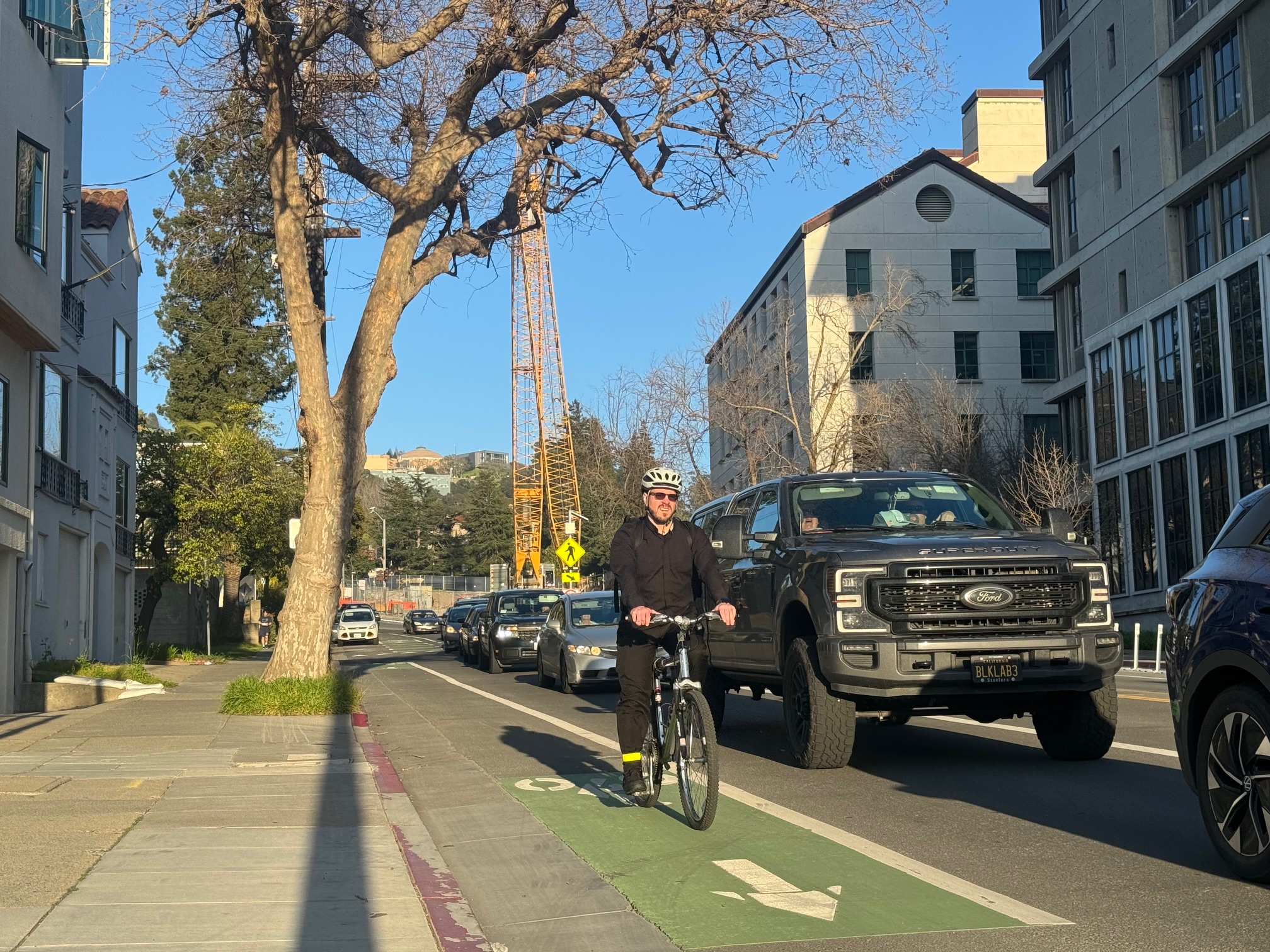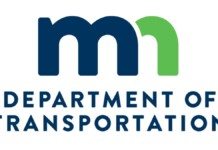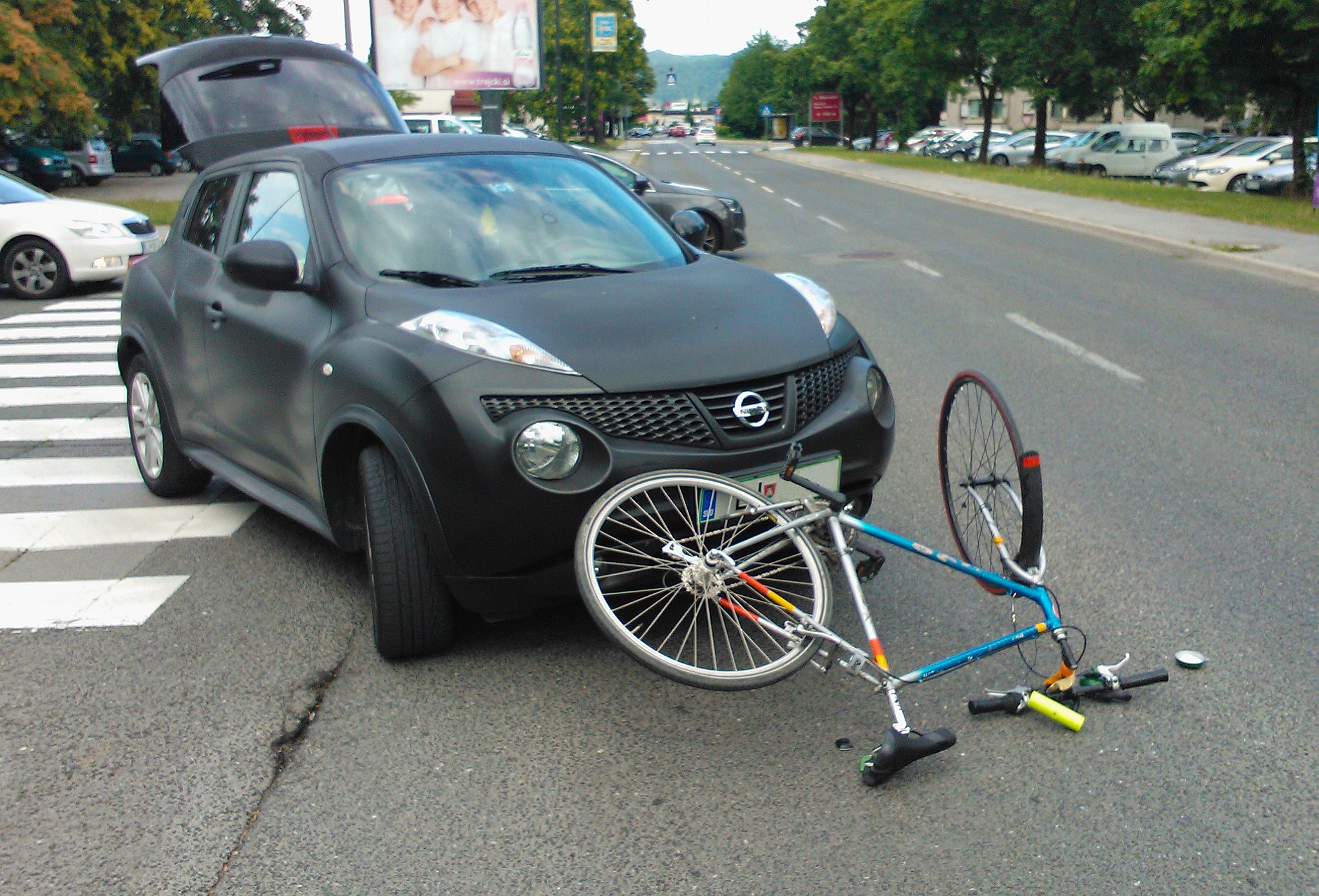SACRAMENTO, California (September 30, 2024) — On September 30, 2024, CalBike released a new report: Incomplete Streets: Aligning Policy with Practice at Caltrans.
The report details where Caltrans has succeeded in adding elements for people biking, walking, and taking transit when it repairs state roadways that serve as local streets. But the findings also detail, for the first time, evidence of where Caltrans falls short, using data to show pattern and practice at the agency and case studies to illustrate how district staffers downgrade and leave out infrastructure people biking and walking on Caltrans projects.
 Last Friday, CalBike celebrated Governor Gavin Newsom’s signing of Senator Scott Wiener’s Complete Streets Bill, SB 960. The signing is a huge victory after seven years of advocacy by CalBike and our partners SPUR, AARP California, and others. We applaud the governor for recognizing the need for reform at Caltrans. Newsom also signed the Transportation Accountability Act, AB 2086, a bill to increase oversight of Caltrans.
Last Friday, CalBike celebrated Governor Gavin Newsom’s signing of Senator Scott Wiener’s Complete Streets Bill, SB 960. The signing is a huge victory after seven years of advocacy by CalBike and our partners SPUR, AARP California, and others. We applaud the governor for recognizing the need for reform at Caltrans. Newsom also signed the Transportation Accountability Act, AB 2086, a bill to increase oversight of Caltrans.
The Complete Streets Bill and the Transportation Accountability Act are the first steps. Holding Caltrans accountable comes next.
Jared Sanchez, policy director at CalBike said, “Caltrans needs more oversight. The Complete Streets Bill will require clearer goals and better reporting for Complete Streets, ensuring that the agency prioritizes the needs of all road users. Our new report explains why Caltrans needed a stronger mandate to get the job done and will continue to need better oversight in the future.”

In California, state routes often double as local streets, weaving through towns and cities. They connect schools, hospitals, senior centers, shops, and homes. These roads are usually the most direct route across regions and are managed by Caltrans to prioritize vehicle speed over the safety of pedestrians and bicyclists. These streets can become safer with Complete Street elements that Caltrans has committed to include in repaving and rehabilitation projects. Now that the Complete Streets Bill has become law, we hope Caltrans will join us in building safer streets, but the agency has a long way to go.
Why was the Complete Streets Bill needed?
In 2023, the California Bicycle Coalition (CalBike) surveyed our members about their experiences on Caltrans-controlled local streets. The response was almost unanimous: people want to walk and bike on state routes that double as local streets, but they don’t feel safe doing so. We then spent much of 2024 reviewing Caltrans project documents from the State Highway Operation and Protection Program (SHOPP) obtained through Public Records Act requests. We narrowed our focus to 200 projects on roadways used by people biking and walking funded by the 2024 SHOPP cycle, out of a total of over 600 projects in the 2024 SHOPP.
The Complete Streets Bill will require Caltrans to consider the needs of people riding bikes, walking, and taking transit on our state roadways, many of which serve as local streets. SB 960 will increase accountability by requiring the agency to set targets for active transportation improvements in SHOPP projects and add elements for people biking, walking and taking transit when it repairs roadways. It will also establish a transit priority policy, placing greater emphasis on transit improvements on state roadways
Findings
Caltrans’ project documents show the agency has made progress but still has a long way to go to make sure state routes that serve as main streets are safe for all users.
The total cost of Complete Streets facilities needs identified in the 200 projects was $1 billion out of total project costs of $6.1 billion, or 17.13% of the project budget. But Caltrans included less than a quarter of the bicycle and pedestrian facilities identified by its staff, ultimately promising to spend less than $240 million on Complete Streets. Therefore, less than 4% of total spending on the 200 projects where Caltrans considered active transportation elements (which was already a subset of the 600 total SHOPP projects) went to bicycle or pedestrian safety.
Despite Caltrans’ public commitment to Complete Streets, its implementation falls short. While 52% of the projects CalBike reviewed included all the identified pedestrian and cycling safety needs, a review of additional planning documents showed that over 60% of the projects failed to meet the documented needs. The disparity between identified needs and implemented facilities highlights a critical need for more effective oversight to ensure safer streets for all California residents.
CalBike will continue to monitor progress at Caltrans to push for greater transparency in the agency’s actions. We look forward to working with Caltrans toward creating a state transportation system that serves all road users.












